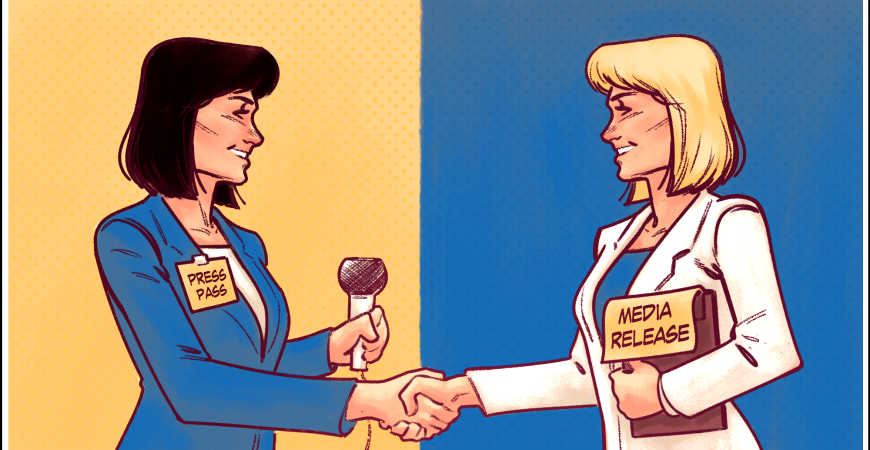By Rebecca Boteler
The transition from journalism to public relations (aka ‘moving to the dark side’) is a well-worn career path for many ex-journos - myself included. There are many transferable skills, including storytelling, the ability to write clearly and succinctly, an understanding of how to translate complex ideas into simple words, a strong news sense, and an insight into the media and how it works.
But there are also many differences between the two jobs, which makes becoming a media advisor after a career in journalism quite a transition. Here are some of them:
Representing clients. As a journalist, your main consideration is pursuing the truth and conveying it to your audience quickly (i.e., before your competitors). But as a media advisor, you need to consider what is in the best interest of your clients, and their reputation. Your journalistic instinct will be to ask your clients to comment on everything on the spot to meet the deadlines of news outlets. But as a media advisor, you often need to slow down and consider things like appropriate messaging, whether the interview will meet the client’s overall objectives, whether there could be any risks involved, and occasionally whether it’s in their best interest to speak at all.
Developing strategy. Most journalists give little or no thought to the work that has gone in to getting a media release onto their desk (or these days, into their inbox). But as a media advisor, you need to think strategically, because it can mean the difference between your client’s story getting picked up or put in the trash. A lot of consideration goes into a media strategy, including messaging, objectives, timing, which publication or journalist might be the most suitable for the story and whether the story can be amplified across platforms – all before a media release is even written.
Focusing on the positives. As a journalist, you’re constantly playing devil’s advocate. It’s your job to challenge, question, pursue truth and hold people to account. But in this pursuit, there can be a tendency to focus on the negatives. Even if a survey reveals two thirds of respondents were positive about a topic, the media is more likely to focus on the third of respondents that weren’t. Similarly, stories about the millions of people who leave their house in the morning and absolutely nothing bad happens to them are not news; the one person who did have something awful happen makes the nightly bulletin.
As a media advisor, your job often involves focusing on the positives. You get to tell your clients’ stories of success, examples of where they’ve exceeded expectations, how they’ve helped people, great new ideas they have and what changes they are initiating to make the world better, or to give people a voice.
And when something negative does happen, you get to help your clients navigate that and learn from it.
For all the jokes about the ‘dark side’, media advisors can still serve the public interest by working with journalists to bring critical issues to the public’s attention – which might be the most important trait you can bring with you from journalism.
 ReGen Strategic
ReGen Strategic